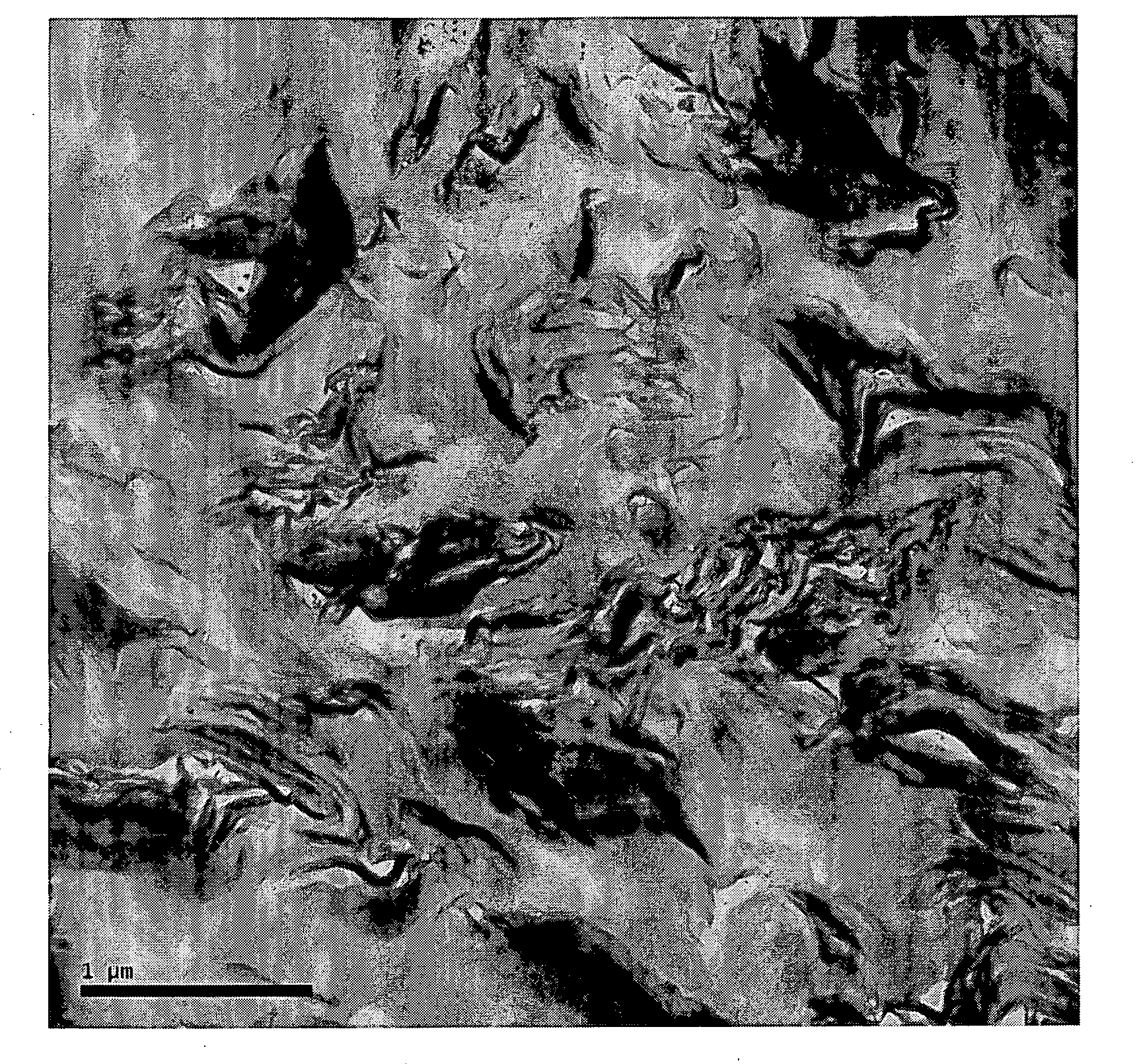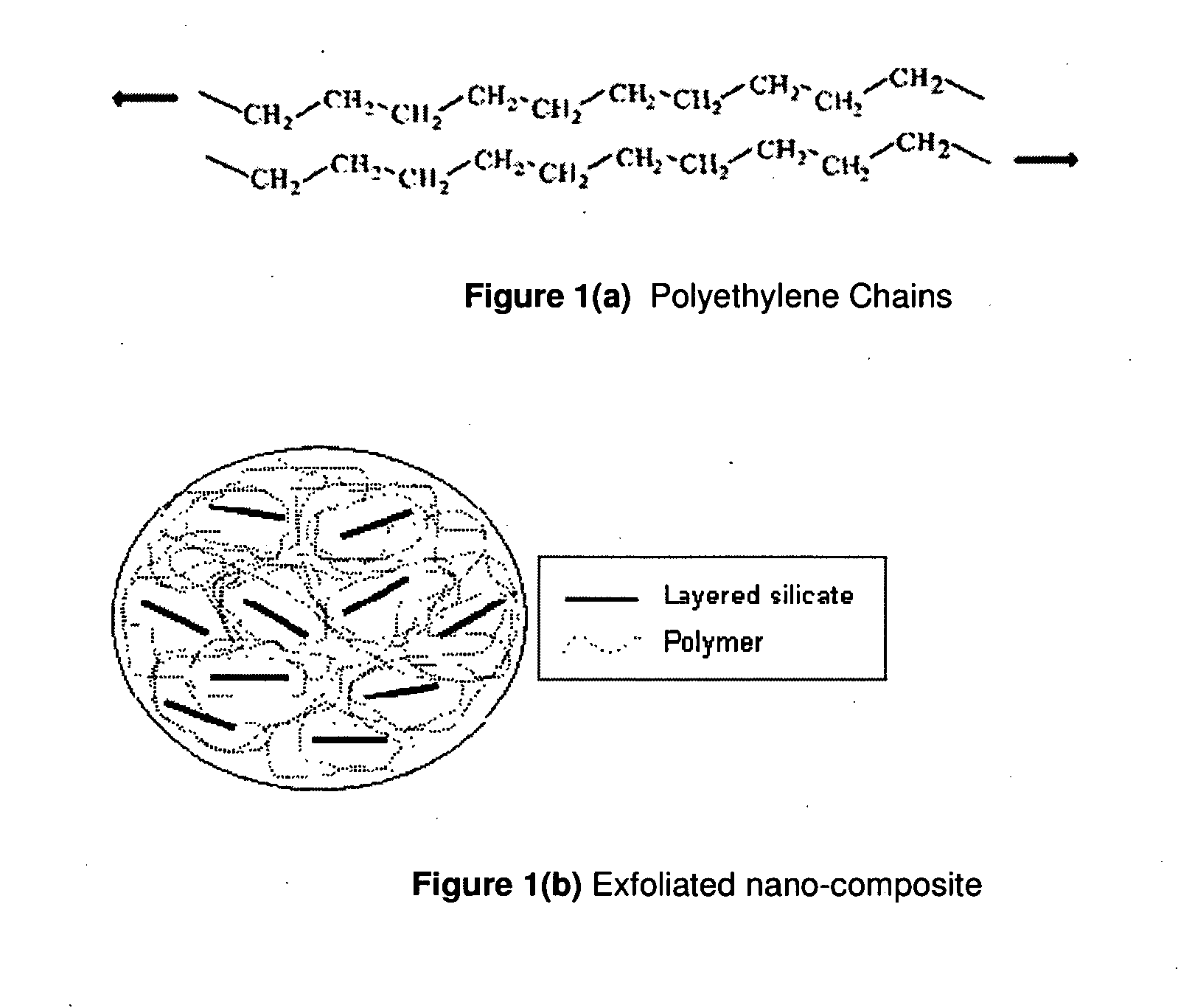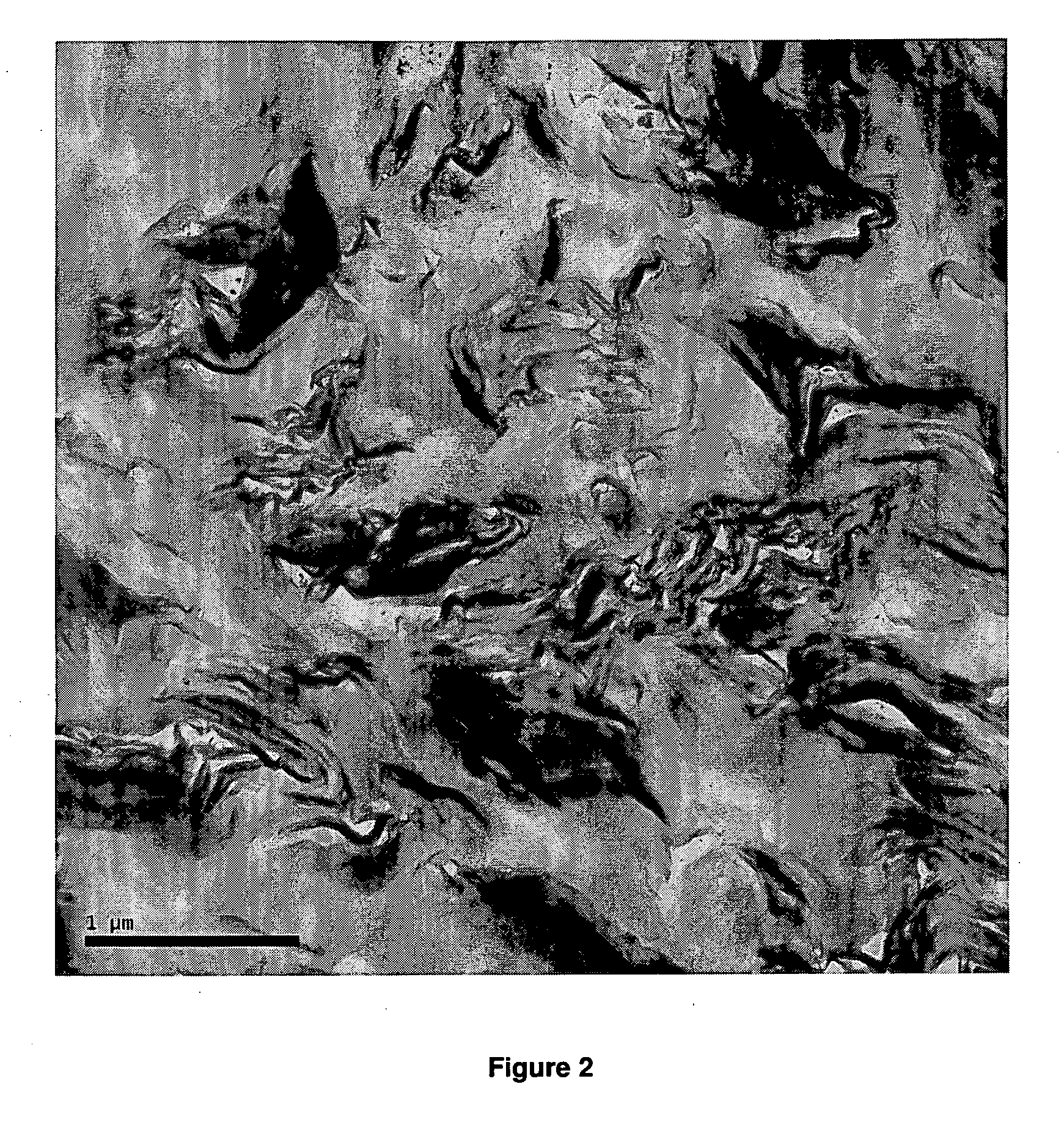Process for the production of high tensile strength and low creep polymer yarns, high tensile strength and low creep polymer or copolymer yarns, and, the use of such yarns
- Summary
- Abstract
- Description
- Claims
- Application Information
AI Technical Summary
Benefits of technology
Problems solved by technology
Method used
Image
Examples
examples 1 to 4
OF THE PRESENT INVENTION
Example 1
[0051]A mixture of an ultra high molecular weight polyethylene, which has the same characteristics as those described in the Comparative Example above, and a polyethylene nanocomposite containing 40 wt % of a nanosized layered clay was prepared, so that the clay weight ratio relative to the total final polymer weight is 0.2%. The mixture was extruded with the aid of a spinning solvent. Extrusion, spinning and drawing conditions were identical to those listed for the Comparative Example. The yarn so obtained presented the properties shown in Table 1. As depicted in FIGS. 3 and 4, a 7% tensile strength decrease and a 12% creep improvement were observed, which indicate that the clay does have a positive influence in the creep properties of the final yarn obtained, even at such low level contents.
example 2
[0052]The same slurry as in Example 1 was prepared, yet the ratio of clay weight relative to total final polymer weight was around 1.2%. Extrusion, spinning and drawing conditions were identical to those listed for the Comparative Example. The yarn so obtained presented the properties shown in Table 1. As depicted in FIGS. 3 and 4, the decrease in tensile strength was the same as for the previous clay contents of 0.2%. However, the creep improvement was 46% relative to that of the yarn with no filler.
example 3
[0053]The same slurry as in Examples 1 and 2 was prepared, however the ratio of clay weight relative to the total final polymer weight was around 2%. Extrusion, spinning and drawing conditions were identical to those listed for the Comparative Example. The yarn so obtained presented the properties shown in Table 1. As depicted in FIGS. 3 and 4, the increase in clay contents led to a 26% tensile strength drop and to creep values very close to those of a mixture which would contain 1.2 wt % of nanofiller.
PUM
| Property | Measurement | Unit |
|---|---|---|
| Temperature | aaaaa | aaaaa |
| Temperature | aaaaa | aaaaa |
| Force | aaaaa | aaaaa |
Abstract
Description
Claims
Application Information
 Login to View More
Login to View More - R&D
- Intellectual Property
- Life Sciences
- Materials
- Tech Scout
- Unparalleled Data Quality
- Higher Quality Content
- 60% Fewer Hallucinations
Browse by: Latest US Patents, China's latest patents, Technical Efficacy Thesaurus, Application Domain, Technology Topic, Popular Technical Reports.
© 2025 PatSnap. All rights reserved.Legal|Privacy policy|Modern Slavery Act Transparency Statement|Sitemap|About US| Contact US: help@patsnap.com



